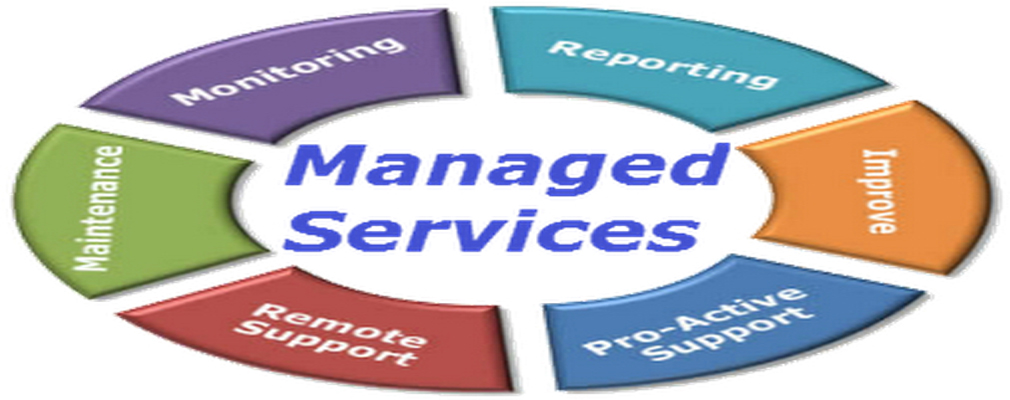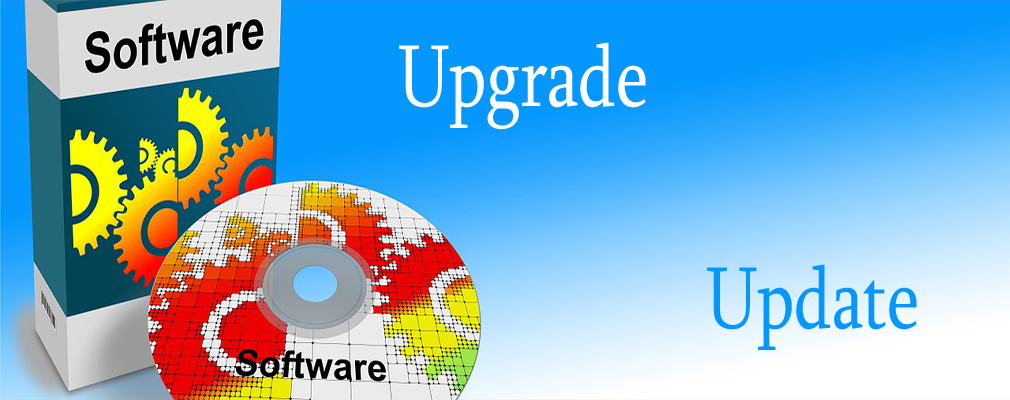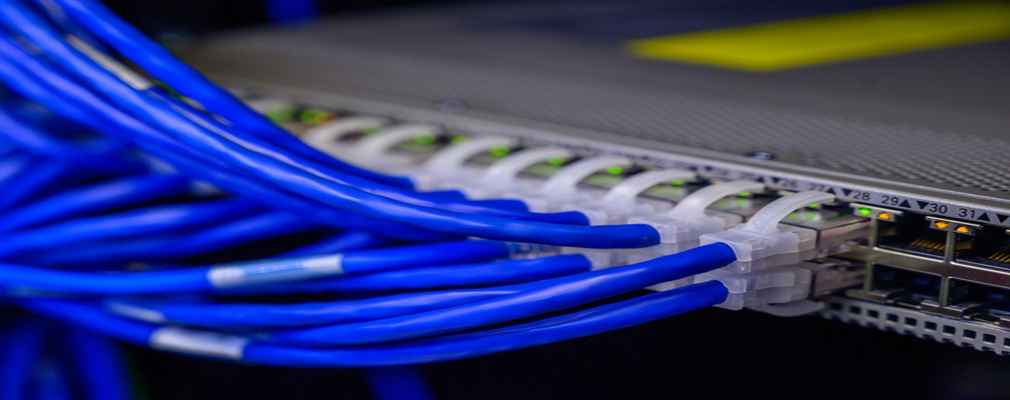How will your business respond when faced with an unexpected situation? With a business continuity plan, you’ll know exactly what steps to take. Leading a small business is a challenging endeavor. |
Microsoft’s latest operating system is starting to take the world by storm. But before jumping ship and upgrading to the new OS, better read this first. It’s finally here. |
You need more than the latest antivirus software to ensure your company’s network is secure. A cybersecurity audit helps you create a complete picture of your security strategy. Cybercrime has grown into one of the epidemics of modern times. |
Cybersecurity continues to be in the news, with a wide range of actors in the space. Some are malicious entities that aim to steal data or simply stop businesses from operating. Others work to prevent those malicious entities from doing so. As a small business, you need endpoint security to ensure that you are safe and that you can keep doing business as normal.
What Exactly Is Endpoint Security?
Simply put, endpoint security is the practice of securing end-user devices. These can be desktops, mobile devices, laptops, and smart devices. Anything that is connected to your network can be a point of attack, including wireless cameras, smart fridges, and even smart thermostats.
IT is a critical part of any business, whether you are a small company making components or one of the many local wineries in Missouri that need to keep careful track of their TTB records and reports. Managed IT services from an MSP (Managed Service Provider) can help make the process go smoothly and keep downtime to an absolute minimum.
What Are Managed IT Services?
Every business has unique needs, but broadly speaking, managed IT can include the following:
Despite Microsoft hailing Windows 10 as "the last Windows ever," Windows 11 was teased in June 2021 and formally announced in July. Early leaked versions show a more user-friendly interface, better security, a funky dark mode, and a streamlined taskbar. And the announcement itself focused on widgets; touch, pen, and voice support; support for different desktop wallpapers on different computers; and an all-new Windows store.
Essentially, it feels a bit like the upgrade from XP to Vista, for those who remember that. But not necessarily in a negative way.
What is Vishish? Vishing is a type of phishing scam but uses voice. It's a type of cybercrime that uses a phone call to steal personal information from its victims. Criminals use certain tactics to convince victims to give up private information and possibly access to their bank accounts. It’s a newer term for “Phone Scam”.
There are many types of vishing. Vishing frequently involves a criminal pretending to represent a trusted institution, business, or government agency. Sometimes you may be asked to buy an extended warranty, or be offered a free vacation, or a very common one, tell the victims that your computer is infected and you need some help getting it repaired.
As everyone knows, some things in life were meant to last forever. Your small business software is definitely not one of them.
Small business software is similar to your car. When you first buy your new car, everything runs great. But over time, things begin to go wrong and does not perform like it used to. Things go wrong that can actually cause safety issues. Outdated software works the same way.
Office 365 is vastly popular among the small business community. As of October 2019, there are 200 million active users. Microsoft is reporting 3 million users added per month. With Office 365 being so popular, most users assume their email is safe. Right? Although Office 365 does provide some robust email protection against spam, viruses, and malware, hackers from around the world are continually launching sophisticated attacks that many small businesses aren't providing protection for.
That's where Advanced Threat Protection (ATP) comes in. Advanced threat protection delivers several benefits that are crucial to your email security.
More than 1.4 million companies currently used Office 365. Small businesses have made the move to Office 365 because it makes the most sense. It's easy to use and works well in your organization. You get software updates, security fixes, and access to your important business documents anytime from anywhere on any device.
What most people assume is that your data, whether it be your email or OneDrive, is automatically backed up in the cloud. This is the biggest misconception for Office 365.
As everyone knows, installing Windows 10 updates can be full of headaches. Over the years, Microsoft would release updates that would damage other functions or features within the operating system. However, it's a catch 22. It's imperative that small businesses patch and update their computers to keep them running safe, secure, and in tiptop shape.
Microsoft releases a feature update twice a year. The typical release dates are once in the spring, and once in the fall . Feature updates are significant updates to the operating system that does both security patching, and adds new features to the operating system. These updates typically take longer, and require more resources to successfully complete.
Windows 10 allows you to choose from a plethora of options and customizations. Microsoft has done a great job with that. Although most small businesses tend to keep the default settings in place, some users like to change the way the interface looks and customize it to their liking.
One of the popular customizations in Windows 10 is the ability to change the size of the icons. Depending on the size of your monitor, you may want to change the size of the icons to match what you're trying to do. Others might want to change the size of the icons due to their eyesight recommendations.
As you may have known, there are billions of emails sent every day around the world. In those emails, the opportunity for malware and viruses to make their way into your inbox seems to be very possible. Of those billions of emails, less than 3% actually contained dangerous attachments that could do harm to your small business. Less than 3% of those billions of emails translates into millions of emails. The best way you can protect your small business is by knowing exactly how to spot the threat when it comes in.
Some dangerous emails are harder to spot than others. The bad guys are becoming more and more sophisticated in their attacks. If you come across the following signs, you can assume the email is dangerous.
Making sure your small business has the proper bandwidth on your Internet connection is extremely important. You'll want to make sure you find the best balance between cost and speed.
As we approached the cooler and drier seasons, monitoring the environmental conditions in your small business is critical to ensure the uptime and reliability of your technology. Maintaining the recommended temperature and humidity levels in your small office can help reduce unplanned downtime caused by environmental conditions and save your small business thousands of dollars.
What is the recommended temperature?
Operating your small business technology for extended periods of time at either high temperatures or low temperatures greatly reduces the reliability and longevity of those components and will likely cause unplanned downtime. The recommended ambient temperature for your IT technology is to keep it between 68 degrees and 78 degrees Fahrenheit for optimal system reliability. This recommended temperature range gives you a safe buffer for your equipment in the event the air conditioning or heating fails while making it easier to maintain a safe relative humidity level.
Back in 2009, Microsoft made a commitment to give support for Windows 7 for a 10-year period. After that, Windows 7 will no longer be supported. The specific end date For Windows 7 will be January 14th, 2020. After January, any technical assistance and software updates from Windows Update will no longer be available. Microsoft has recommended to anyone Using Windows 7 to upgrade to Windows 10 before the end of this year.
What does this mean for my small business?
If you're running Windows 7 in your small business after January 14th, 2020, you will no longer be able to receive any security updates. It's extremely important to get a more updated operating system such as Windows 10 to give your small business the latest security updates in order to keep your data safe.
The old way small businesses have created passwords is just not cutting the mustard anymore. Typically, small businesses will just create a simple easy to remember, short password so they can quickly log onto their devices. However, with high profile data breaches, phishing schemes, and brute force attacks, there are a plethora of ways that criminals can break into your account and steal your information.
Here are a few simple ways you can protect yourself and your small business.
As everyone knows, the more you use your computer, over time your computer will slow down and become more sluggish. Your Internet browser will go slower, opening up applications will become sluggish, and when you reboot your computer it seems to take forever.
Windows 10 users are no exception to this. Even the latest operating system tends to fall victim to occasional slowdowns. This can be extremely frustrating for your small business and reduce your overall efficiency. Here are some tips that will help you keep your computer running smooth, fast, and may eventually help save you some cash.
Have you ever wondered what the deal is with ransomware? You may have read it about it online or heard it on the news. You may know a friend that got hit with ransomware or know of another business that did. If you want to know a little bit more about ransomware and how to protect your small business, you've come to the right place.
What exactly is ransomware?
Ransomware, or sometimes called ransom malware, is a type of malware that prevents you as a user from accessing any of the data on your computer or being able to access your computer at all. All of your documents, whether it be PDFs, word documents, or QuickBooks files, won’t be accessible. You can try to open them, but the computer won't let you. Your computer is basically rendered useless unless you pay the ransom to the bad guys so they can send you a key to unlock all of your encrypted files. In the late 80s, payment was sent to the bad guys via snail Mail. Nowadays, the bad guys want payment sent via cryptocurrency or even your credit card. Statistics show, that only 50% of paid ransoms actually get the key returned to unlock your small business files.
Small businesses typically use a computer for 8 or more hours each day. Each website that you visit typically has a composition of 100 or even thousands of files. Even websites that you visit which are professionally optimized, in order to display the content, the server still has to load many files.
The very first time you visit a website, the browser that you are using will save pieces of that website to your local computer. The reason for that is when you visit that website again, it will pull up the website much faster only loading the fresh files from the server. These files are called cached files that ultimately help reduce the load time.
Why should small businesses remove those saved files since they are helpful in loading web pages?
Quite often, web developers will make changes to their website while it is already published on the Internet. If you have old versions of cached files, your computer will continue to use those old versions. You won't see the new updated information from that website. In addition, you may also encounter browser errors like a runtime error, missing button on the page, or you’ll be unable to save content (just to name a few).
Deleting your cache and cookies in your favorite browser will help fix these potential issues.
How do I delete these files for my small business computer?
In Chrome:
On your computer, open Chrome.
At the top right of your screen, click on the 3 vertical dots
Click More Tools > Clear Browsing Data
At the top of that window, choose a time range. To delete everything on your computer, select all time.
Next to “cookies and other site data” and “cached images and files”, check the boxes.
Click clear data.
In Firefox:
On your computer, open Firefox.
Click on the View History icon in the top right (looks like 3 books standing on end with a book leaning at an angle)
Click on history
Click on Clear recent history
Select time range to clear: We recommend choosing “everything”
Check the boxes for “cookies” and “Cache”
Click on “Clear Now”
In Internet Explorer:
On your computer, open Internet Explorer
Click on the gearbox on the top right of your window
Select Tools > Safety > Delete browsing history
Only select Temporary Internet files AND Cookies and website data
Click delete


















